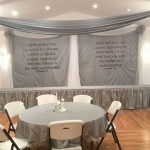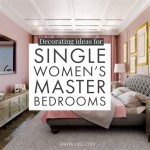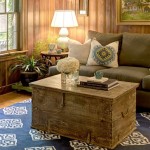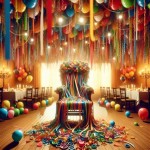Fun Decorating Ideas to Revitalize Your Living Space
Decorating a living space serves as an avenue for self-expression and can significantly impact mood and overall well-being. It transcends mere aesthetics; it's about crafting an environment that reflects personality, fosters comfort, and stimulates creativity. This article delves into various fun decorating ideas that can transform a house into a personalized haven, focusing on key elements that contribute to a vibrant and engaging atmosphere.
Embracing Color and Texture
Color and texture are foundational elements in interior design, capable of eliciting specific emotions and defining the character of a room. Thoughtful application of these principles can dramatically alter the perceived size, warmth, and overall ambiance of a space.
Experimenting with bold color palettes can inject energy and personality into a room. Consider utilizing vibrant accent walls, incorporating colorful furniture pieces, or introducing artwork with striking hues. The chosen colors should harmonize with the existing architecture and furniture, creating a cohesive visual experience. For instance, a room with neutral walls can benefit from a brightly colored sofa or a gallery wall featuring artwork with diverse color schemes.
Texture plays a crucial role in adding depth and interest to a space. Combining different textures, such as smooth surfaces juxtaposed with rough or plush materials, creates a tactile experience that engages the senses. Throw blankets with varying knits, textured rugs, and pillows with intricate patterns can contribute to a layered and visually appealing aesthetic. Natural materials like wood, stone, and woven textiles are particularly effective in adding warmth and organic character. Consider incorporating a reclaimed wood coffee table, a stone accent wall, or woven baskets for storage to introduce natural textures into the room.
Layering textures effectively requires careful consideration of the existing elements in the room. Avoid overwhelming the space with too many competing textures. Instead, focus on selecting a few key textures that complement each other and enhance the overall design. For example, a room with smooth leather furniture can be softened with plush throw pillows and a shag rug. The key is to achieve a balance that is both visually appealing and comfortable.
Furthermore, consider the lighting in the room when incorporating color and texture. Natural light enhances the vibrancy of colors and accentuates the nuances of textures. Artificial lighting can be used to highlight specific areas or to create a more intimate ambiance. Experiment with different lighting fixtures and bulbs to achieve the desired effect. Dimmable lights are particularly useful for adjusting the mood of the room throughout the day.
Personalized Wall Art and Decor
Walls offer a blank canvas for expressing individuality and showcasing personal interests. Moving beyond generic prints, explore diverse options to create a gallery wall that tells a story or incorporates unique decorative elements that reflect personal style.
A gallery wall is more than just a collection of pictures; it's a curated display that reflects personal taste and memories. Begin by selecting a theme or color palette that ties the different pieces together. This could be a collection of family photos, travel mementos, or artwork that resonates with personal interests. Vary the sizes and styles of the frames to create visual interest. Experiment with different layouts before committing to a final arrangement. A helpful tip is to lay the frames out on the floor first to visualize the final configuration.
Beyond traditional framed art, consider incorporating alternative wall decor elements such as tapestries, macramé hangings, or sculptural pieces. These additions can add texture and dimension to the walls, creating a more dynamic and engaging visual experience. Vintage maps, antique mirrors, and reclaimed wood signs are also excellent options for adding character and personality to the space.
Another innovative approach is to create a living wall using plants. Vertical gardens not only enhance the aesthetic appeal of the room but also improve air quality. Select plants that are suitable for indoor environments and that require minimal maintenance. Succulents, ferns, and trailing plants are popular choices for living walls. Ensure that the lighting and watering requirements of the plants are met to maintain their health and vitality.
Personalization extends beyond the selection of artwork and decor; it also involves the way these elements are arranged and displayed. Consider creating a focal point on the wall, such as a large piece of art or a cluster of smaller items arranged in a visually appealing pattern. Utilize shelves or ledges to display decorative objects, books, and plants. The key is to create a balanced and harmonious arrangement that reflects personal style and interests.
Remember that the purpose of wall art and decor is to enhance the overall ambiance of the room and to reflect personal identity. Choose items that bring joy and inspire creativity. Don’t be afraid to experiment with different styles and arrangements until you find a combination that resonates with personal taste.
Repurposing and Upcycling Furniture and Decor
Sustainability is becoming increasingly important in interior design. Repurposing and upcycling furniture and decor not only reduces waste but also adds a unique and personal touch to the living space. Transforming old items into new functional or decorative pieces allows for creativity and resourcefulness, resulting in one-of-a-kind designs.
Old furniture can be given a new lease on life with a fresh coat of paint, new hardware, or updated upholstery. A worn-out dresser can be transformed into a stylish bathroom vanity, or an old ladder can be repurposed as a bookshelf. The possibilities are endless, limited only by imagination. Before beginning any upcycling project, thoroughly clean and prepare the furniture. Remove any loose paint or varnish, and make any necessary repairs to ensure the stability and functionality of the piece.
Vintage items can also be repurposed in creative ways. Old jars and bottles can be transformed into vases or candle holders. Vintage suitcases can be stacked to create a unique side table or storage unit. Antique teacups can be used as planters for succulents or small herbs. By repurposing vintage items, a sense of history and character is added to the living space.
Upcycling also extends to decor items. Old fabric scraps can be used to create patchwork quilts, throw pillows, or even wall art. Buttons, beads, and other small embellishments can be used to decorate picture frames or mirrors. Wine bottles can be transformed into decorative lamps or planters. The key is to look at everyday items with a creative eye and to envision their potential for transformation.
When repurposing and upcycling, consider the overall style and aesthetic of the room. Choose materials and finishes that complement the existing decor. Don't be afraid to experiment with different techniques and ideas. The goal is to create a unique and personal design that reflects individual style and resourcefulness. Consider the functionality of the repurposed item and ensure that it serves a practical purpose in the living space.
Repurposing and upcycling is not only an environmentally friendly practice but also a cost-effective way to decorate a home. It allows for the creation of unique and personalized designs without breaking the bank. By embracing creativity and resourcefulness, old items can be transformed into beautiful and functional pieces that enhance the overall ambiance of the living space.
Strategic Use of Lighting
Lighting is a cornerstone of interior design, influencing mood, highlighting architectural features, and creating visual interest. A thoughtful approach to lighting goes beyond mere illumination; it involves layering different light sources to achieve an optimal balance of function and aesthetics.
Ambient lighting provides overall illumination to a room. This can be achieved through ceiling fixtures, recessed lighting, or wall sconces. The goal is to create a comfortable and even level of light that allows for safe and easy navigation. Dimmer switches are particularly useful for controlling the intensity of ambient lighting, allowing for adjustment based on the time of day and the desired mood.
Task lighting provides focused illumination for specific activities, such as reading, cooking, or working. Desk lamps, floor lamps, and under-cabinet lighting are examples of task lighting. The placement of task lighting should be strategic, ensuring that it adequately illuminates the area without creating glare or shadows. Adjustable task lights are particularly versatile, allowing for customization based on individual needs.
Accent lighting is used to highlight specific features or objects in a room, such as artwork, architectural details, or decorative elements. Track lighting, spotlights, and picture lights are commonly used for accent lighting. The goal is to create visual interest and to draw attention to the focal points of the room. Accent lighting should be subtle and complementary, rather than overpowering the other lighting layers.
Beyond the type of lighting, consider the style and design of the lighting fixtures. Lighting fixtures can serve as decorative elements themselves, adding to the overall aesthetic of the room. Choose fixtures that complement the existing furniture and decor. For example, a room with modern furniture might benefit from sleek and minimalist lighting fixtures, while a room with vintage furniture might be enhanced by antique or vintage-inspired lighting fixtures.
The color temperature of the light bulbs also plays a significant role in the ambiance of the room. Warm light bulbs (2700-3000K) create a cozy and inviting atmosphere, while cool light bulbs (3500-4100K) provide a brighter and more energizing light. Experiment with different color temperatures to achieve the desired effect.
By layering different types of lighting and carefully considering the style and placement of lighting fixtures, a space can be transformed into a well-lit and visually appealing environment that enhances both function and aesthetics. Lighting is not just about illumination; it's about creating an atmosphere that is conducive to comfort, productivity, and relaxation.

16 Unique And Fun Decorating Ideas Mmm 266 Block Party Keeping It Simple

28 Genius Classroom Decorating Ideas For 2025 Teach Starter

60 Easy And Chic Home Decor Ideas To Try From Designers

55 Fun Lake House Decor Ideas For Your Home And Backyard Decorating

66 Easy Fall Decorating Ideas To Elevate Your Home In 2025

55 Diy Party Decorations Easy Ideas For Decor

Fall Home Decorating Ideas Our Potluck Family

7 Patio Decorating Ideas On A Budget I Should Be Mopping The Floor

5 Fun Decorating Ideas For Your Child S Bedroom Fads Blogfads Blog

21 Gorgeous And Super Easy 4th Of July Decorating Ideas Robyn S French Nest
Related Posts







